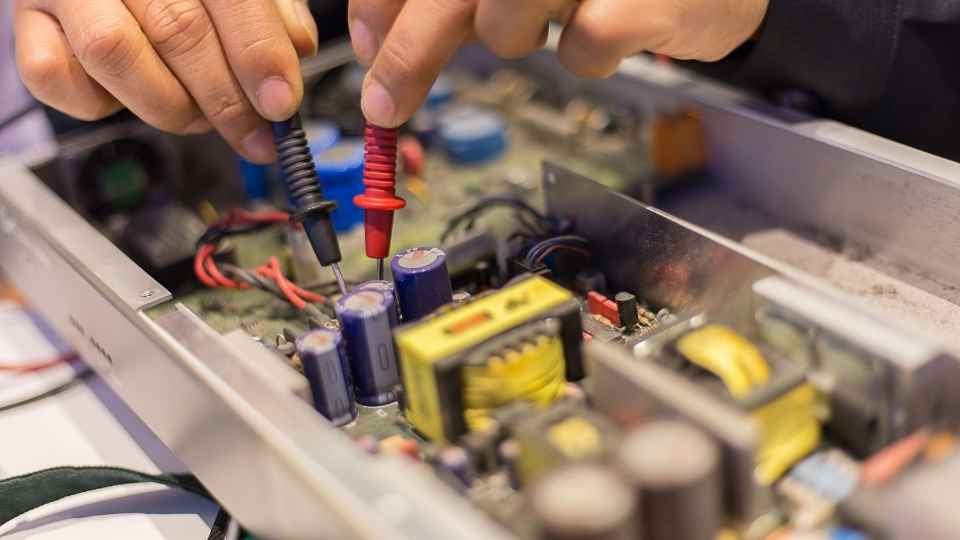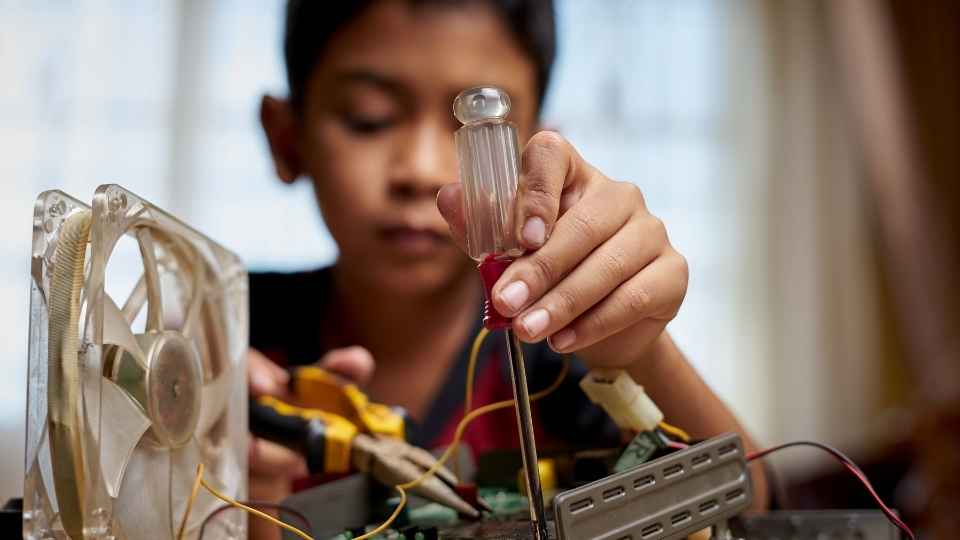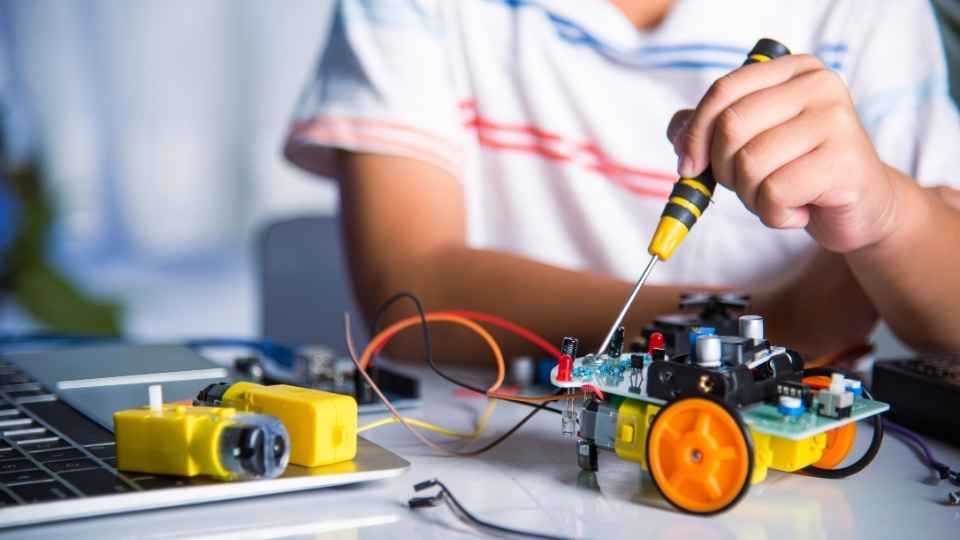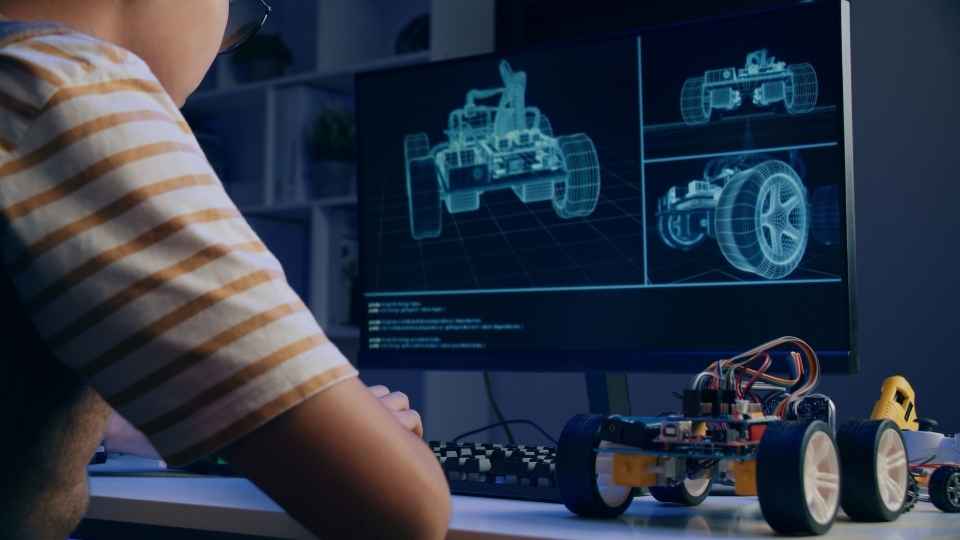
In the realm of technology, there exists a tantalizing dream: the creation of truly autonomous AI-powered robots. These innovative machines, capable of making independent decisions and performing complex tasks without human intervention, hold immense promise for revolutionizing industries and our daily lives.
However, are we truly on the cusp of achieving this elusive goal? In this article, we will delve into the current state of autonomous robots, explore advancements in AI-powered robotics, analyze the challenges faced in attaining true autonomy, and discuss the pivotal role that machine learning plays in their development.
Join us as we uncover how close we are to realizing a future where robots can function with remarkable independence.
Key Takeaways
- Significant advancements in AI technology have enabled autonomous robots to navigate and interact with their surroundings without human intervention.
- Challenges in achieving true autonomy include handling unforeseen situations, ensuring robustness and safety, and addressing ethical considerations.
- Machine learning plays a crucial role in enabling robots to learn from data and adapt to their surroundings.
- The future prospects for truly autonomous AI-powered robots include advanced decision-making capabilities, accurate environment representation, and adherence to ethical guidelines.
The Current State of Autonomous Robots
The current state of autonomous robots showcases significant advancements in AI technology. These robots are equipped with advanced sensors, algorithms, and machine learning capabilities that enable them to navigate and interact with their surroundings without human intervention. They can analyze vast amounts of data in real-time, make informed decisions based on predefined rules or learned patterns, and execute actions accordingly.
This level of autonomy is crucial for applications such as autonomous vehicles, delivery drones, and industrial automation. However, despite these remarkable achievements, true autonomy remains a challenge. Robots still struggle with handling unforeseen situations and ambiguity in their environment.
Achieving complete autonomy requires further improvements in perception systems, decision-making algorithms, robustness against uncertainties, and the ability to learn from new experiences autonomously. Only then will we witness the emergence of truly autonomous AI-powered robots capable of navigating an unbounded range of scenarios without human supervision or intervention.
Advancements in AI-Powered Robotics
Significant progress has been made in the field of robotics with the integration of advanced artificial intelligence technologies. These advancements have brought us closer to achieving truly autonomous AI-powered robots.

One area where significant strides have been made is in perception and cognition. Robots are now equipped with sophisticated sensors that enable them to perceive their environment accurately, allowing them to navigate complex terrains and interact with objects more effectively. Additionally, AI algorithms have improved robot learning capabilities, enabling them to adapt and make informed decisions based on real-time data.
Another significant advancement is in natural language processing, which allows humans to communicate with robots more intuitively and efficiently. This enables a higher level of collaboration between humans and robots, making it easier for users to instruct and guide robots in performing specific tasks.
While these advancements are promising, challenges still remain in achieving complete autonomy for AI-powered robots. Issues such as robustness, safety, and ethical considerations need to be addressed before we can fully trust these machines to operate independently without human intervention.
Nonetheless, the current advancements in AI-powered robotics demonstrate remarkable potential for creating intelligent machines that are capable of operating autonomously while respecting freedom of choice. Continued research will undoubtedly bring us closer to realizing this vision of truly autonomous AI-powered robots that can revolutionize various industries and enhance our daily lives.
Challenges in Achieving True Autonomy
Achieving complete autonomy for AI-powered machines poses several challenges that must be addressed, including robustness, safety, and ethical considerations. To truly achieve autonomy in AI-powered robots, the following challenges need to be overcome:
Robustness: AI systems need to be able to operate effectively and adaptively in various real-world environments without relying on constant human intervention or supervision.
Safety: Ensuring the safety of autonomous robots is crucial. They must be able to detect and respond appropriately to unexpected situations or hazards to prevent accidents or harm.

Ethical considerations: Autonomous robots should adhere to ethical guidelines and principles while making decisions or taking actions. Issues such as fairness, transparency, accountability, and privacy need to be carefully addressed.
Addressing these challenges is vital for the development of truly autonomous AI-powered robots that can enhance our lives while ensuring our freedom and safety.
Transitioning into the subsequent section about 'the role of machine learning in autonomous robotics,' it is essential to understand how machine learning algorithms enable these robots to learn from data and improve their performance over time.
The Role of Machine Learning in Autonomous Robotics
Machine learning algorithms play a crucial role in enabling robots to learn from data and improve their performance over time. These algorithms allow robots to analyze large amounts of input data, identify patterns, and make predictions or decisions based on that information. By continuously learning from their experiences, robots can adapt to changing environments and tasks, allowing them to become more autonomous.
One key aspect of machine learning in autonomous robotics is reinforcement learning. This technique involves providing the robot with positive or negative feedback based on its actions, enabling it to learn which actions lead to desirable outcomes. Through this iterative process of trial and error, the robot can refine its behavior and decision-making abilities.
Another important use of machine learning in autonomous robotics is computer vision. By training models on vast datasets of images or videos, robots can develop the ability to perceive and understand their surroundings. This allows them to navigate through complex environments, recognize objects or people, and perform tasks that require visual understanding.
Future Prospects for Truly Autonomous AI-Powered Robots
One of the key considerations for the future prospects of AI-powered robots is the development of advanced decision-making capabilities that allow them to navigate complex environments and perform tasks with a high degree of efficiency and accuracy. Achieving true autonomy in AI-powered robots requires addressing several challenges:

Sensor Fusion: Autonomous robots need to effectively integrate data from various sensors such as cameras, lidar, and radar to create an accurate representation of their environment.
Machine Learning Algorithms: Developing sophisticated algorithms that can learn from data and adapt to changing circumstances is crucial for autonomous decision-making.
Ethical Considerations: As AI-powered robots become more autonomous, it is essential to define ethical guidelines for their behavior, ensuring they prioritize human safety while respecting privacy and rights.
Addressing these challenges will bring us closer to truly autonomous AI-powered robots that can navigate complex environments independently and perform tasks efficiently, paving the way for a future where humans enjoy freedom from repetitive or dangerous tasks.
Frequently Asked Questions
What Are the Potential Ethical Implications of Using Autonomous Ai-Powered Robots?
The potential ethical implications of using autonomous AI-powered robots are vast. These include concerns over privacy, job displacement, biases in decision-making algorithms, and the potential for misuse or harm caused by these advanced machines.
Autonomous robots differentiate between objects and make decisions based on gathered information by utilizing advanced AI algorithms. These algorithms analyze visual data, recognize patterns, and employ machine learning techniques to categorize and prioritize object characteristics for effective decision-making.
Are There Any Legal Frameworks in Place to Regulate the Use of Autonomous Ai-Powered Robots?
There are legal frameworks in place to regulate the use of autonomous AI-powered robots. These frameworks aim to ensure ethical and responsible development, deployment, and use of such technologies, addressing concerns related to safety, privacy, liability, and accountability.

What Are the Main Limitations or Constraints of Current Ai-Powered Robotics Technology?
Current AI-powered robotics technology faces limitations and constraints. These include issues with perception, understanding complex environments, dexterity for manipulation tasks, and lack of generalization. Overcoming these challenges will be crucial to achieving truly autonomous AI-powered robots.
How Do Autonomous Robots Handle Unexpected Situations or Scenarios That They Have Not Been Previously Programmed For?
Autonomous robots handle unexpected situations by leveraging their AI-powered algorithms and sensors to analyze real-time data, identify patterns, and make decisions. This enables them to adapt their actions and behavior accordingly, ensuring efficient problem-solving capabilities in diverse scenarios.
 Basic Electronics ConceptsEssential ToolsCircuit Design BasicsMicrocontrollersDIY Electronics ProjectsRoboticsPrivacy PolicyTerms And Conditions
Basic Electronics ConceptsEssential ToolsCircuit Design BasicsMicrocontrollersDIY Electronics ProjectsRoboticsPrivacy PolicyTerms And Conditions
